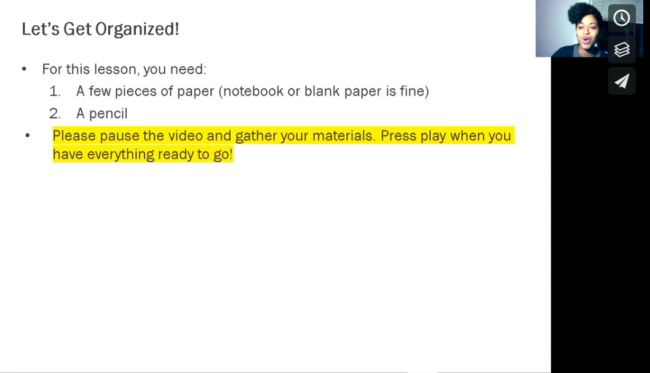04.16.20Virtual Procedures and Routines: How Alonzo Hall and Linda Fraser Set Students Up To Be Successful

Having strong procedures and routines is one of the most important things you can do to support learning in a bricks and mortar classroom. Ensuring that students to know how to do frequently recurring tasks well is a driver of focus and efficiency. It helps us as teachers make the endeavor of school feel productive and important.
One thing that watching examples of online teaching has taught us is that virtual classrooms often have more in common with the real thing than you might suspect, and the importance of procedures and routines is a good example.
With that in mind here’s a video of two teachers from Uncommon Schools’ math team–Alonzo Hall and Linda Fraser–starting their lessons. They’re both great examples of teachers who instill and reinforce clear procedures. And the similarities between them show the benefit of consistent school wide approach–even in a virtual world.
Some things we loved here on Team TLAC:
Both teachers do a great job of helping students start off organized. These are both asynchronous lessons. Students watch the videos on their own at a time of their choosing. But both videos remind students of the tools they need to be successful in a brand new context where they may not have build those habits yet.
Neither teacher rushes the set-up. Not only do they take time to explain the procedures clearly and to emphasize ‘this is how we’ll do it every day,’ but they encourage students to use the pause bar to take their time and make sure they’re ready. Their pacing shows set-up procedures matter as much as their words. And just because it’s asynchronous doesn’t mean you can be intentional about letting students control and take responsibility for the pace: you can and should always pause to make sure you’re ready.
Both teachers are diligent about making it part of their systems that important directions are not only given BOTH verbally and visually but that they are highlighted in yellow so students notice them. Alonzo even makes this transparent to students: “Whenever the yellow highlight comes across our page it is simply a reminder that you can/should pause the video to copy the notes from the page.” Linda reminds students of the importance of her visuals by saying: “Please pause to make your paper look like mine.”
Both teachers are organized and efficient themselves–they’re clear on what they want to get done; they are not going to waste anyone’s time–but they also have a warmth to them. Linda’s smile is steady and reassuring. Alonzo says “Whenever you press play i will be the voice that you see here.”
There are even “purpose, not power” moments. Alonzo, for example, makes it clear that you need a pencil, not a pen, because that’s how great mathematicians do it.
Hopefully one of the other takeaways is the power of shared systems across teachers…. just like in a school. The more familiar the more consistent the procedures are the more students will get used to them and the more successful they will be. The consistency of their approach says: We are still a school; we’re still connected.
